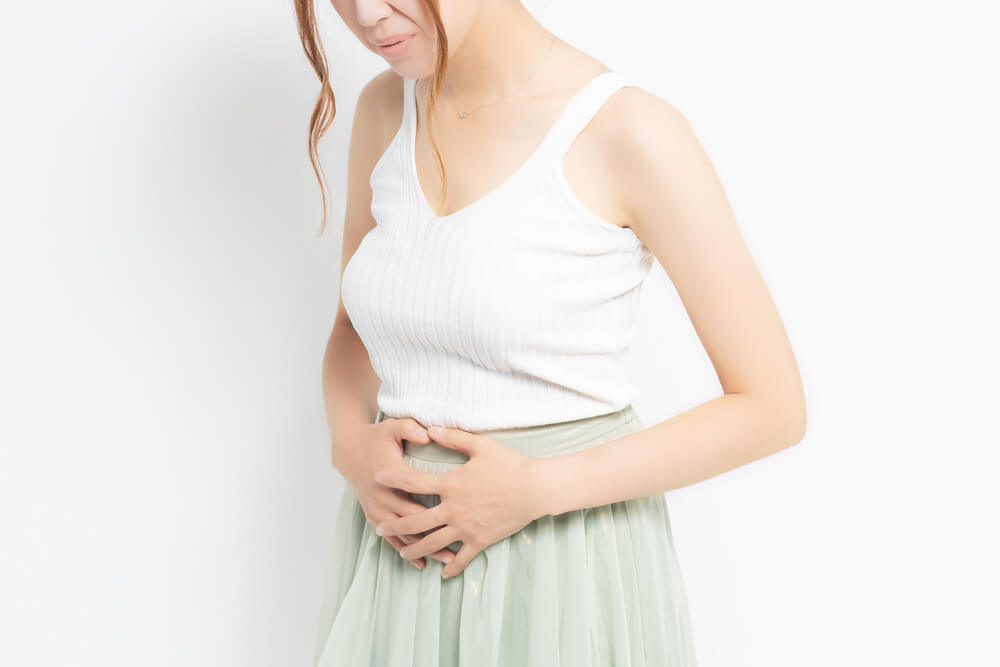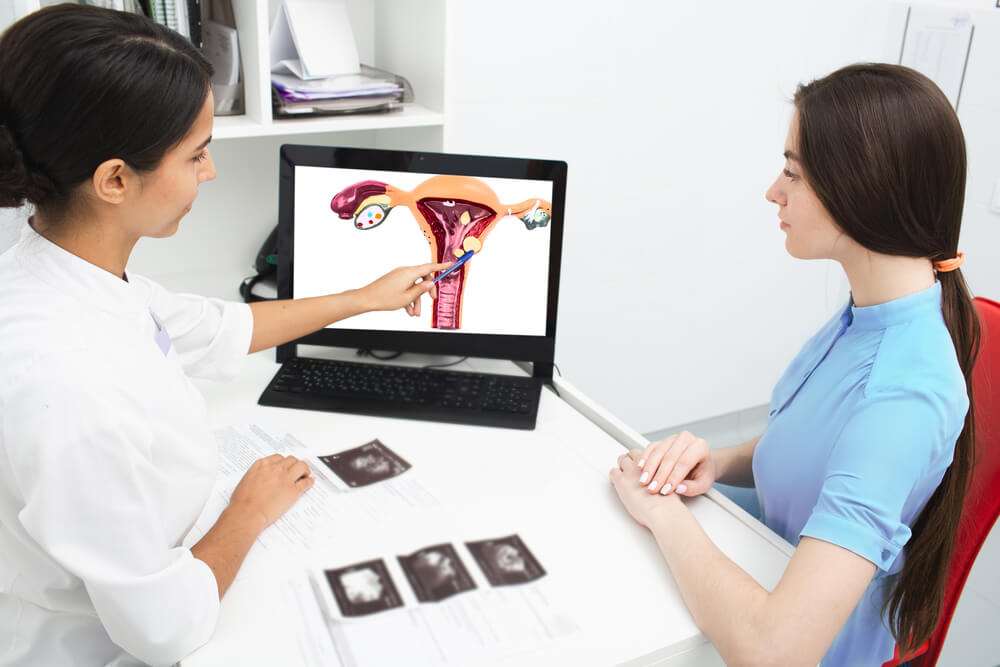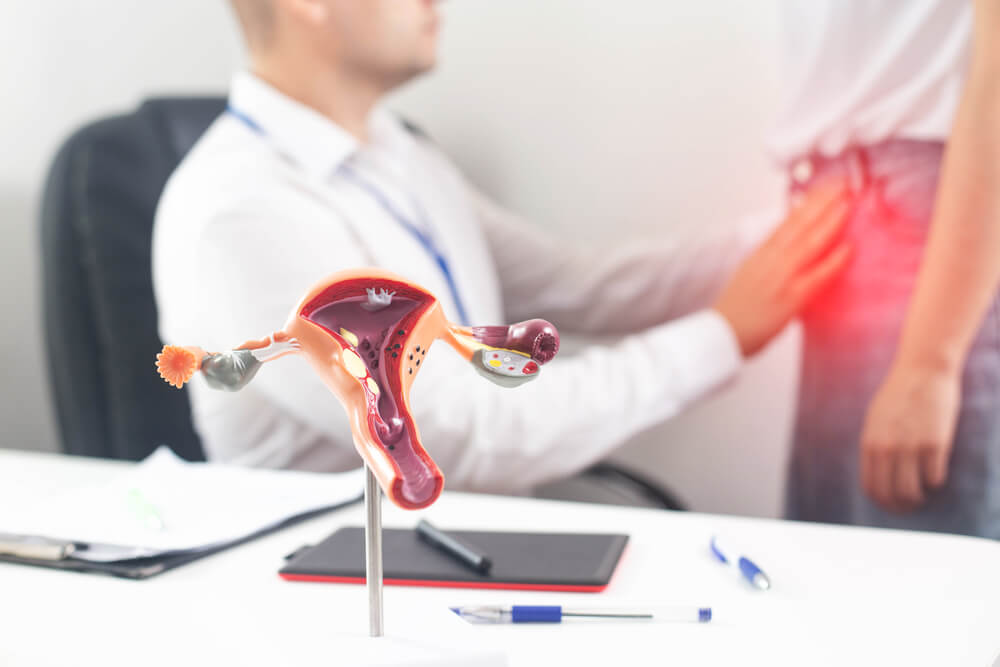Uterine fibroids, or simply fibroids, are benign growths on or around the uterine wall which most often appear during a woman’s childbearing years. They are also frequently referred to as leiomyomas or myomas, and they are not connected to increased risks of uterine cancer, nor do they develop into cancer later on.
Almost 30% of women experience uterine fibroids until they are 30, and up to 80% get them until they turn 50. Although they are noncancerous, they bring discomfort into a person’s everyday life and should be treated as soon as the symptoms start interfering with their quality of life.
When it comes to their shapes and sizes, they can range from microscopic and barely visible to very large bulk masses, and they can be in single units or form groups. Whatever the case, it is interesting to mention that women frequently are not even aware they have fibroids in their uterus because the signs of fibroids are non-existent. On the other hand, sometimes the symptoms are very severe, and they demand urgent doctor’s help and treatment.
After realizing that you have myomas and need medical attention, make sure you choose an experienced expert who can help you deal with your condition. At My OBGYN Specialists, you can find a friendly, welcoming atmosphere and a team of specialists who will certainly give you guidance and help your condition to the best of their abilities.
Signs of Fibroids and their Causes

Unfortunately, the direct causes of uterine fibroids are still left to be determined, but experts who have done research most often point to the following factors:
- Hormones estrogen and progesterone that stimulate the development of the uterine lining during the menstrual cycle are seen as promoters of the growth of myomas.
- Genetics is said to be a potential cause because fibroids can contain gene changes that are different from genes in the cells of the uterine muscles.
- Extracellular matrix or ECM is the bonding material that sticks cells together, and the levels of ECM are higher in fibroids.
- Growth factors that aid the body in maintaining tissues.
Experts share that uterine fibroids might develop from stem cells in the muscular tissues of the womb. One cell divides multiple times and creates a firm mass that is different from the tissue around it. The growth patterns of myomas are various; they can grow rapidly or slowly, shrink and disappear on their own or stay in one place for a long time and grow. Sometimes fibroids that appear during pregnancy disappear on their own after delivery.
Studies have also shown that certain risk factors can impact the development of uterine fibroids, such as:
- Gender
- Being at a childbearing age
- Race
- Genetics
- Starting period at a young age
- Obesity
- Vitamin D deficiency
- Eating more red meat
- Eating fewer greens
- Eating less fruit and dairy
- Drinking alcohol
- Using birth control pills
Some of these factors can be easily influenced and changed, but factors such as race or genetics are something we are born with, and our only option is to find efficient ways of relieving symptoms or treating fibroids.
Symptoms of fibroids are sometimes non-existent, but if they are visible, they are most often influenced by the size, location, and number of fibroids present in the body. The most common signs of fibroids in women are:
- Heavy bleeding during your period
- Pelvic pain or pressure
- Periods that last more than seven days
- Urinating frequently
- Constipation
- Inability to fully empty the bladder
- Back pain
- Leg pain
- Anemia
- Fatigue
If your symptoms start getting severe, and your pelvic pain does not stop, your periods get very painful, heavy, and prolonged, you experience spotting between two periods, you cannot empty your bladder, and you have anemia without any evident cause, call your doctor and schedule a consultation because this might be caused by uterine fibroids.
How to Avoid Fibroids?

Many people wonder if there is a way to prevent fibroids; unfortunately, the answer is no. Because the exact causes are unknown, effective strategies for preventing fibroids have yet to be invented.
This said, there are lifestyle habits that help in managing the symptoms of uterine fibroids you are experiencing, and they include:
- A rich diet that includes vegetables, fruits, healthy fats, fiber, etc., can influence the decrease of symptoms, while diets rich in sugar and saturated fats can have the opposite effect on this condition. Iron is also one of the most crucial supplements when you suffer from heavy menstrual bleeding because it will stop the development of iron deficiency in the body.
- Exercising is another factor that can relieve signs of myoma. This does not have to include heavy lifting, going to the gym every day, etc. it can also be based on yoga, stretching, Pilates, aerobics, jogging, swimming, and alike. Increasing endorphins in the body can help with pain and cramps.
- Drinking liquids, especially water, can be highly beneficial for you. This helps with muscle relaxation, constipation, and anemia.
- Although you are wondering how to avoid fibroids, we can advise you to avoid drinking coffee as it will help you with the reduction of pelvic pain and pressure in the abdomen.
- A fiber-rich diet is ideal if you want to avoid constipation, which is directly related to fibroids.
- Supplements such as vitamin D are there to help patients reduce the development of fibroids, as one study shows. Make sure you discuss this with your doctor before taking any supplementation.
All of the abovementioned solutions are temporary, and it is essential to highlight this. The only sure way to eliminate uterine fibroids is through medical treatment. Managing symptoms is beneficial and can be of great help to women. Still, if you are suffering from serious pain and complications, it is necessary to speak to your doctor and determine a treatment path.
When it comes to medical treatment of uterine fibroids, here are some of the most popular ones:
- Uterine fibroids embolization
- Contraceptive pills
- Progestational agents (oral and injected)
- GnRH agonists
- Intrauterine devices
- Myomectomy (laparoscopic or robotic)
- Hysterectomy
- Radiofrequency ablation
- Endometrial ablation
- Tranexamic acid
- Anti-inflammatory medicine
- Ulipristal acetate
- Hysteroscopic resection of fibroids
- Hysteroscopic morcellation of fibroids
- MRI-guided procedures
- Ultrasound-guided procedures
Visit Us!
Although you found out in this article that one cannot prevent fibroids, there is a lot you still do not know about uterine fibroids that our experienced staff can teach you. Your reproductive health is our number one concern, and we welcome you to call us and find out anything you want to know about uterine fibroids. Our friendly team is at your disposal, so whenever you want, just give us a call. We are here for you, so feel free to pick up the phone!


